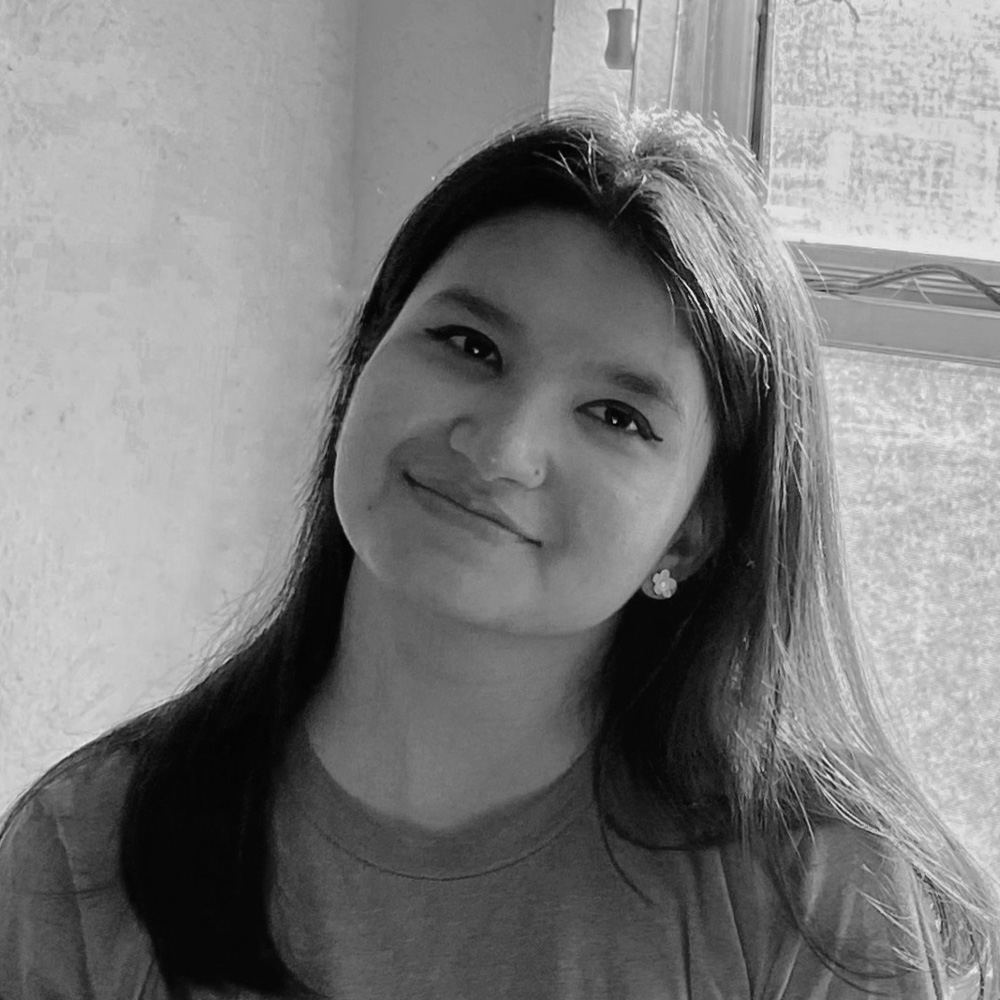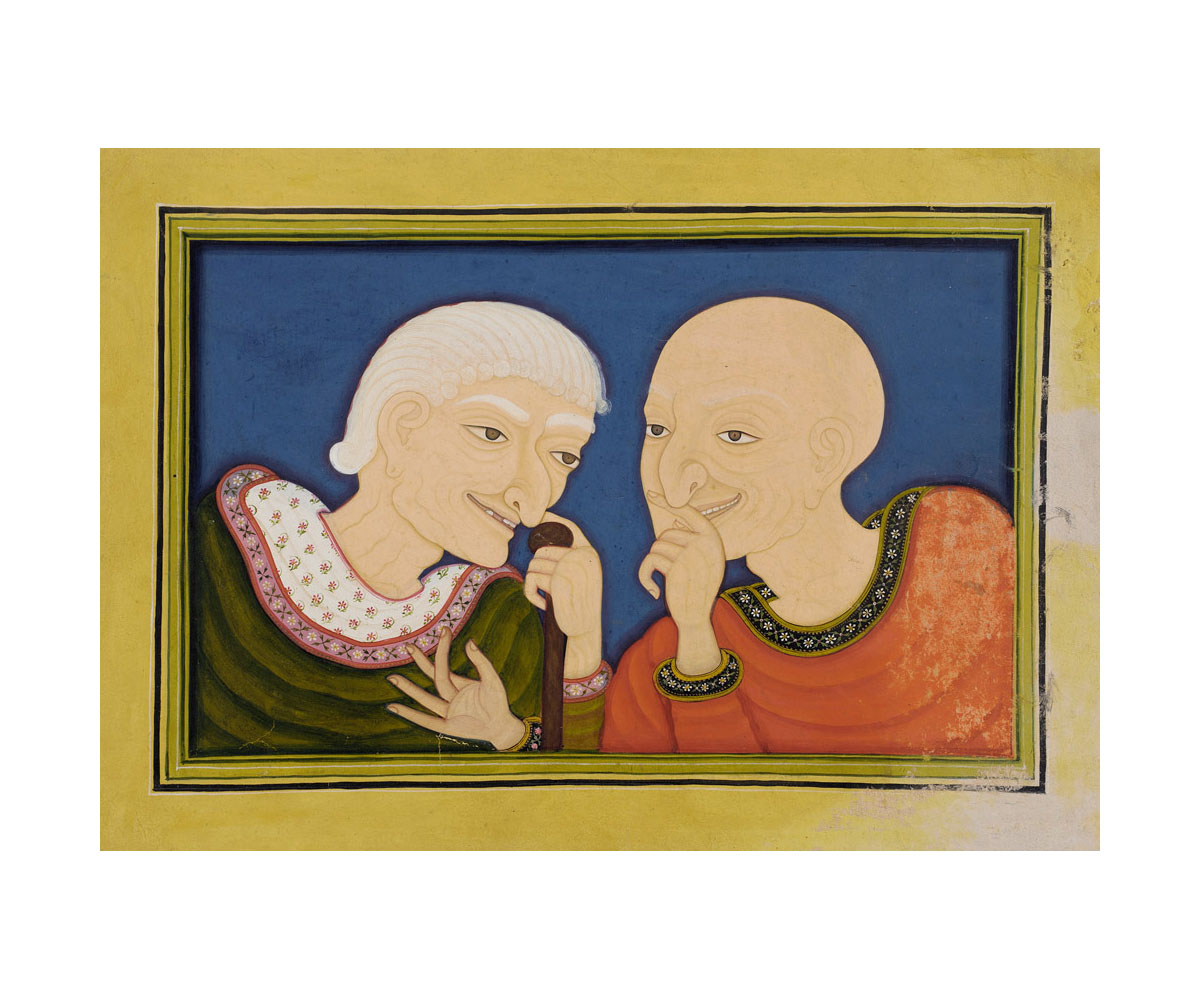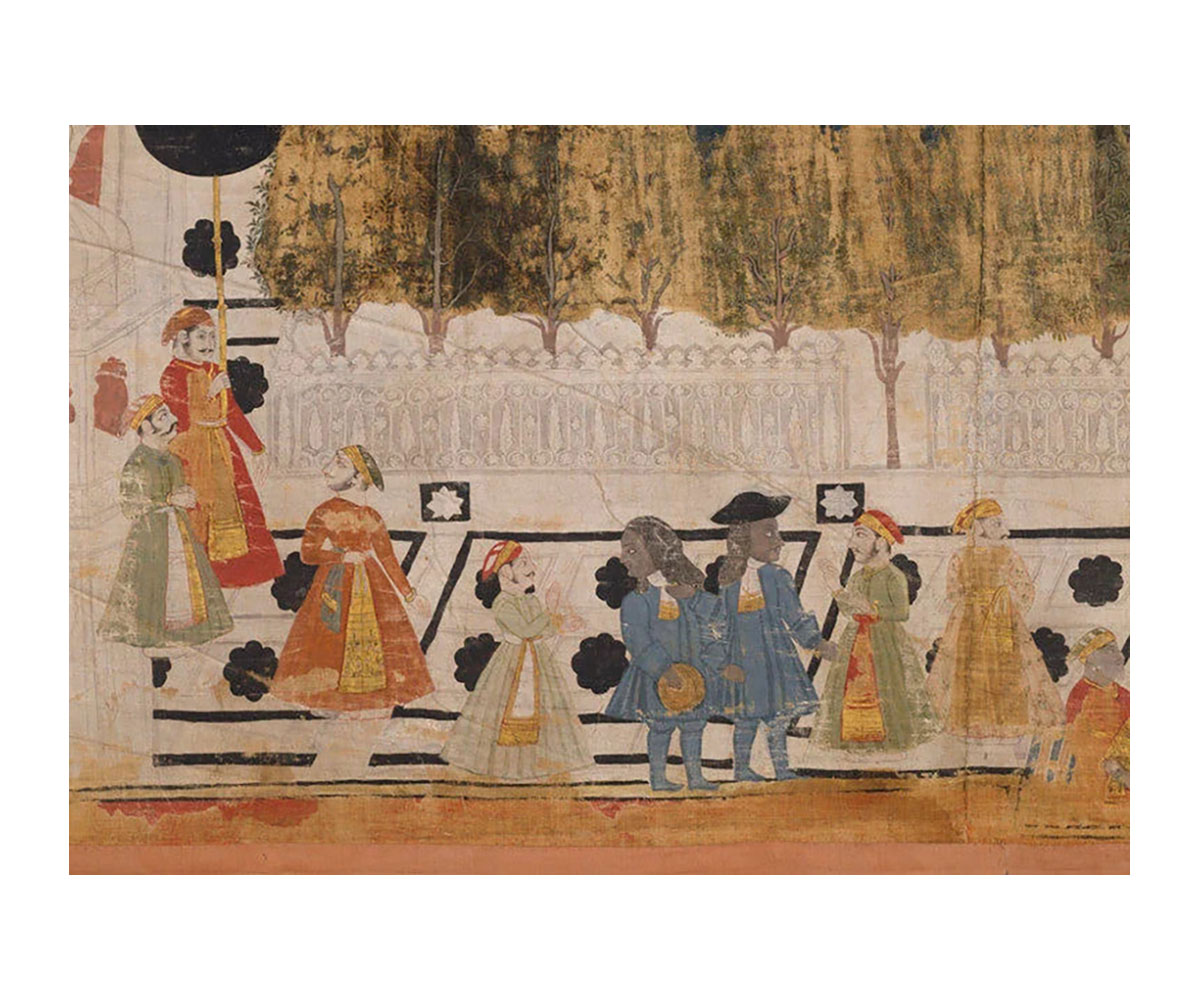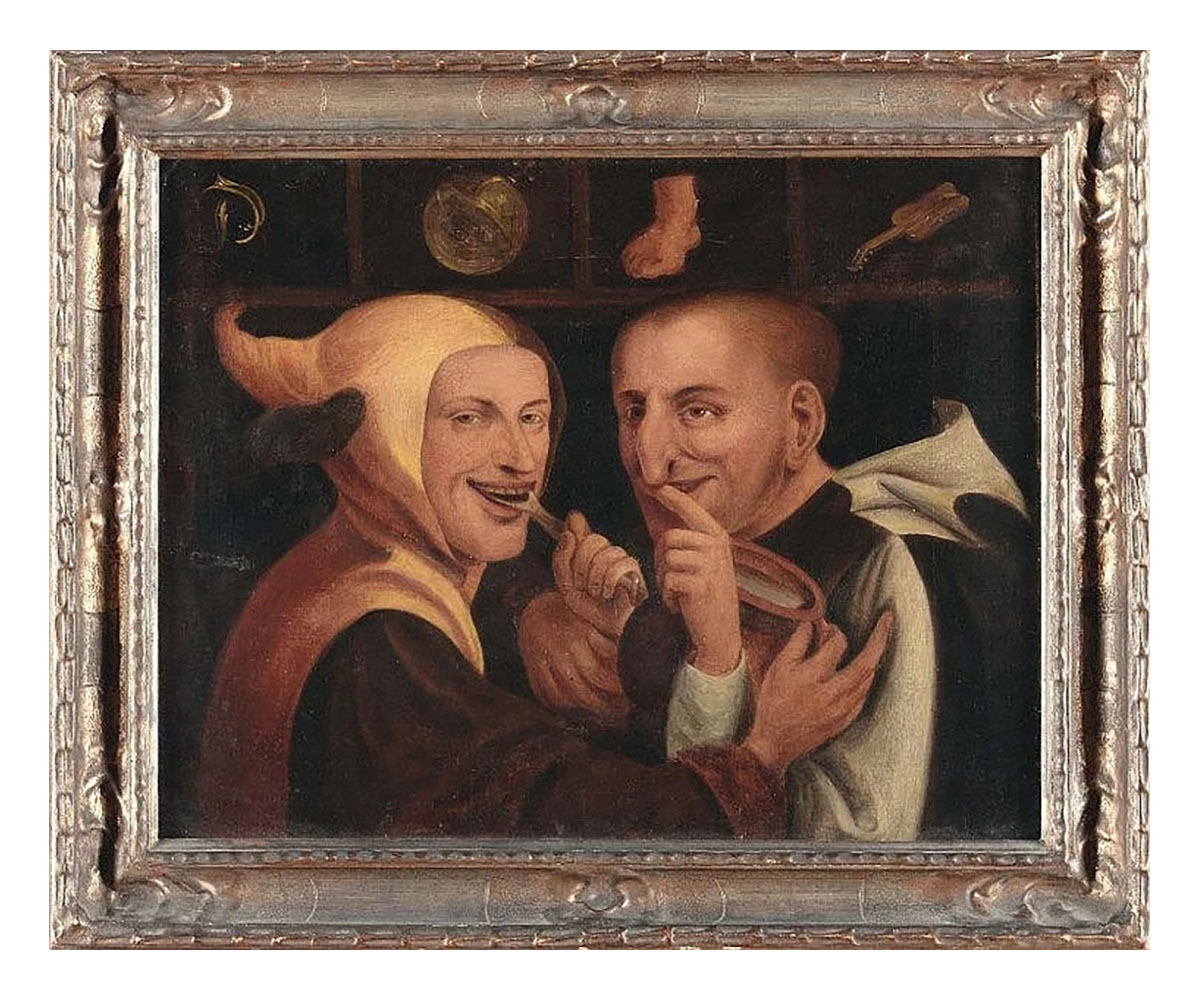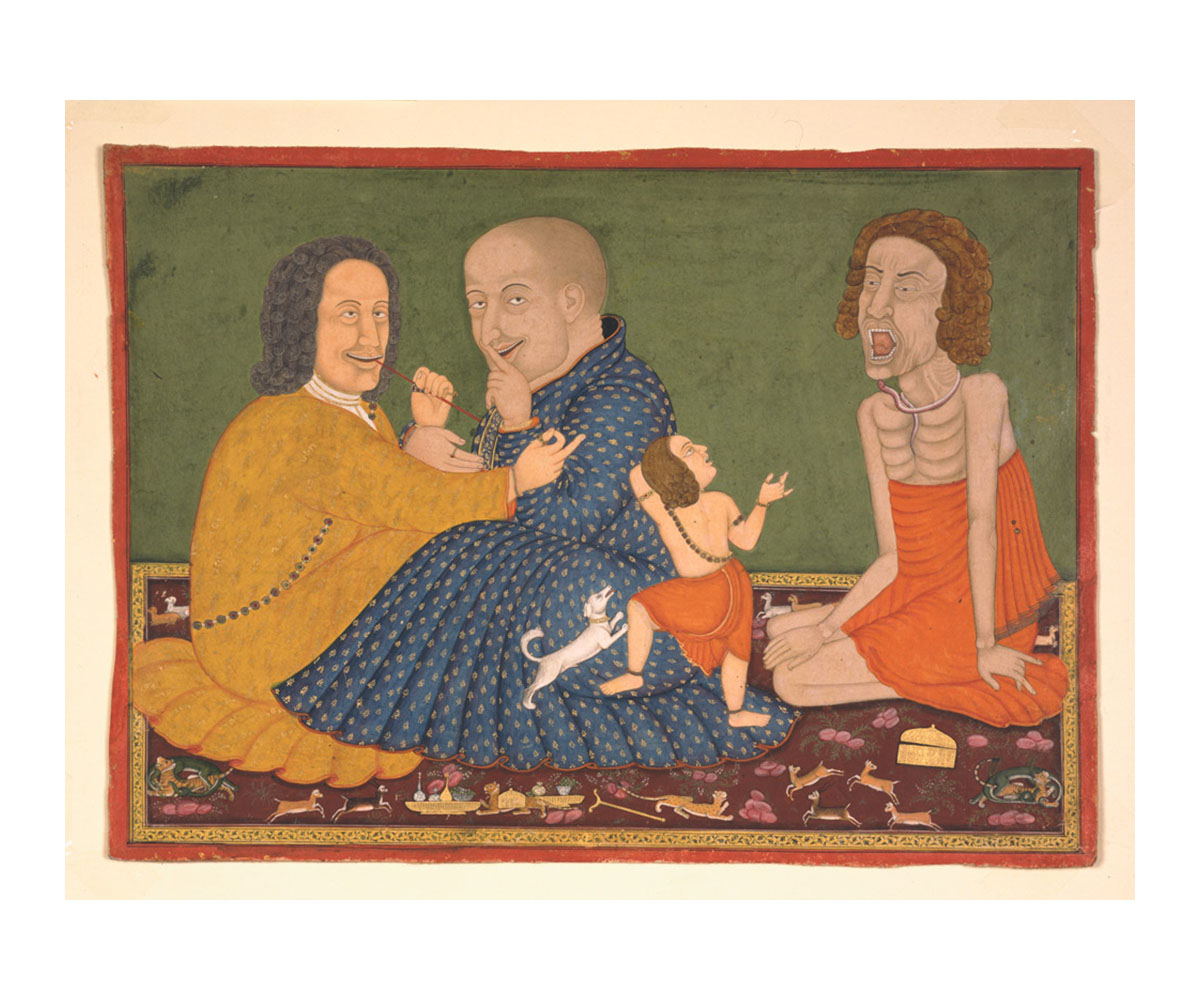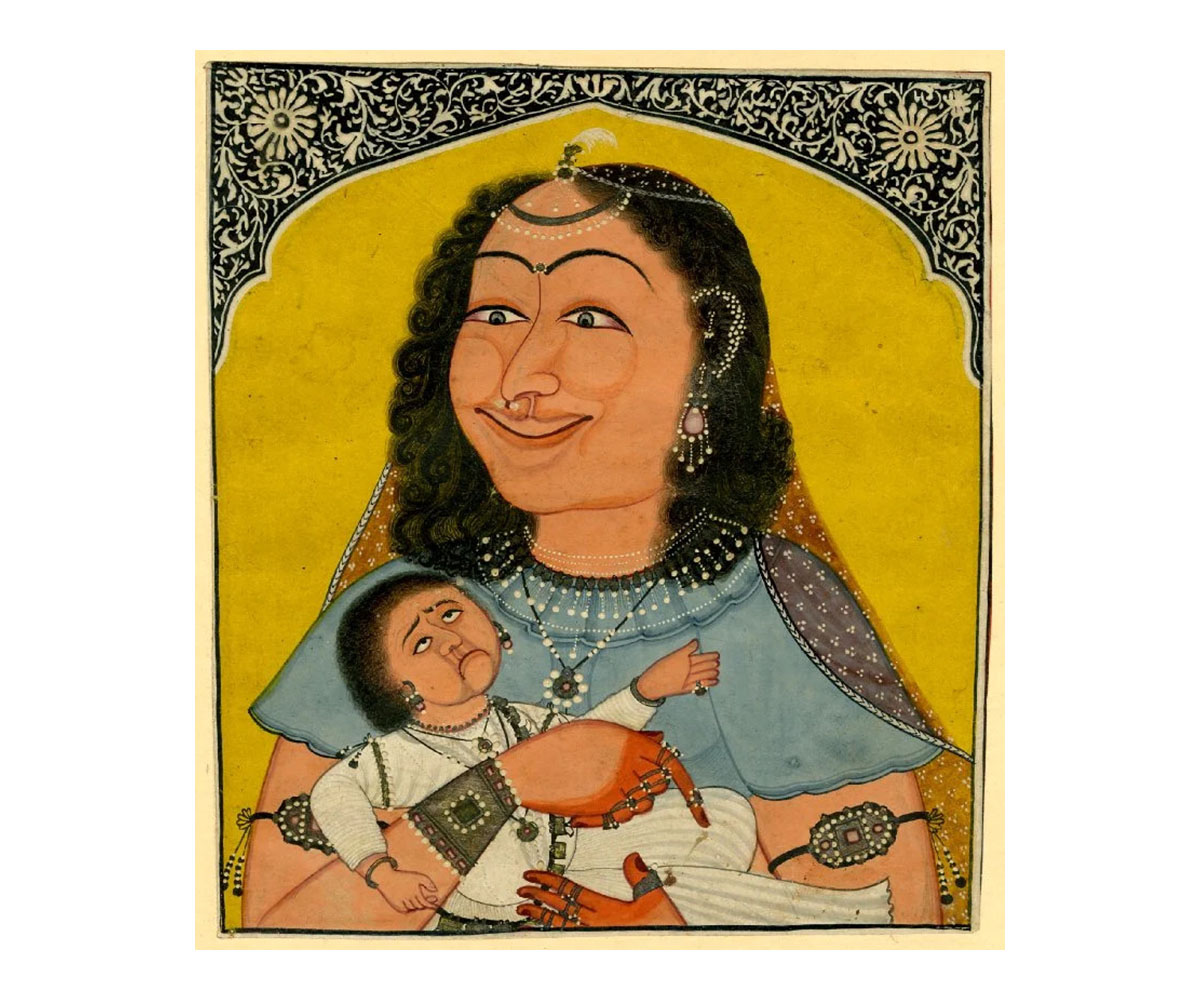PERSPECTIVES
Caricaturing the West: Mewar’s ‘European Concoctions’
While orientalist visual representations of the places, cultures and people of South Asia are widespread in the public domain, less well known are the comical representations of Europeans in grotesque and obscene compositions which flourished in the Mughal and Rajput courts from the sixteenth to the nineteenth centuries. Just as in “Parody of Europeans,” a late nineteenth-century painting from Mewar, Rajasthan, where we see two wizened figures with wrinkled faces and uneven teeth wiping their crooked noses, an entire genre of paintings depicting ‘exotic’ foreign figures began appearing in local settings.
In an eighteenth-century Mewar painting, we see a meeting between Maharana Sangram Singh of Udaipur and Johan Ketelaar, the Dutch ambassador, at the lavish Udaipur court. Ketelaar, an expert in Persian, Hindi and Urdu, led the 1711 delegation sent by Verenigde Oostindische Compagnie (VOC), the Dutch East India Company, to the then Mughal emperor, Bahadur Shah I, and was received by the Maharaja of Udaipur en route. Ketelaar proved to be a very popular representational figure for generations of painters from the Udaipur court. Interestingly, the Dutch visitors are portrayed as dark-skinned, a visual detail made more striking against the white-marbled background. From such depictions of historical encounters, a genre of caricaturing Europeans soon developed with foreigners painted in Kamasutra-esque erotic postures, featuring comical facial expressions. Art historian Stephen Markel notes that South Asian art has “depicted [these figures] with an embellished physical form and heightened artistic style, often as caricatures with exaggerated features and convoluted postures, and frequently wearing misunderstood foreign or hybrid garb.”
There are some visual and representative similarities between these parodic images and sixteenth-eighteenth-century European satirical paintings by artists such as William Hogarth, Dary Marly and Peiter Balten. For instance, doesn’t Balten’s painting of a pair of jesters representing the Dutch proverb – the world feeds many fools – bring to mind the Mewar depiction of Europeans wiping their noses? The act of touching the nose with the forefinger appears to have been popular as it recurs across many other paintings. This gesture — beyond suggesting an act of obscenity or exaggerated astonishment — references the use of snuff, a smokeless variant of tobacco, calling upon the global tobacco trade in the early modern period.
In addition to this parodic motif, paintings such as “A European Concoction” present a feast of visual satire, including variable body sizes, strange costumes and a man being bitten by a snake — a running gag, perhaps, as it’s also depicted in a portrait of a European man. There also emerged some syncretic compositions combining European and South Asian art styles. A painting of a mother and child is one example which mimics portrayals of Madonna and the Child reimagined in local settings and styles. As scholars have noted, the Madonna-Child template was widely used to reimagine a syncretic ‘European-Indian motherhood.’ The curious facial features of the mother-child duo — the mother featuring a caricaturish smile and the child seeming to be on the verge of tears instead of being soothed — suggest that even such syntheses hold satirical meanings. As inspired as the artists were by representations of Madonna, they also perhaps challenged them in intriguing ways as seen through this work.
This fascinating repertoire of ‘European Concoctions’ made by artists at Rajput courts in Bundi, Mewar and Kishangarh reveal the existence of a flourishing parody tradition within South Asian art and these unique and intriguing pieces complicate our easy understanding of historical encounters between Europeans and South Asians.
Bibliography
Kamińska-Jones, Dorota. “Art and Gender in the Contact Zone: European Women and Indian Miniature Painting,” Art of the Orient 5 (2016): 202.
Markel, Stephen. “The Enigmatic Image: Curious Subjects in Indian Art,” AsianArt.com, July 30, 2015. https://www.asianart.com/articles/enigmatic/index.html.
Murali, Prathik. “‘All Eyes Were Turned on Them’: Amusing Paintings of Exotic Firangis in Mewar.” Sahagama, December 6, 2020. https://www.sahagamana.com/post/all-eyes-were-turned-on-them-amusing-paintings-of-exotic-firangis-in-mewar.



